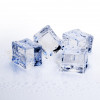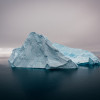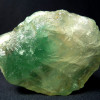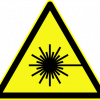Hayabusa2 brings asteroid samples to Earth
Interview with
For the first time, samples of rock from a distant asteroid were brought back to Earth. The recovery is part of a remarkable Japanese Space Agency mission called Hayabusa2, whose goal is to discover the makeup of space rocks and match them to the meteorites that have fallen to Earth, as well as to reveal clues about the origins of Earth’s water. Adam Murphy spoke to Luke Daly from the University of Glasgow, who is one of the scientists who’ll be analysing the material from the asteroid…
Luke - The Hayabusa2 mission, went and visited an asteroid called Ryugu, it's an object in our solar system, known as a near-Earth asteroid, which means it's just in Earth's local neighbourhood. And it's about a kilometre in diameter and has a really interesting shape. It's kind of a spinning top, diamond-like shape, which is, well, now we know it's pretty common, but it was unusual at the time when we first saw it.
Adam - Why did we choose to go to this asteroid, then?
Luke - The asteroid Ryugu, there's kind of two reasons why we went there. The first is it's because it's a near-Earth asteroid. And so it's easy to get to using the rockets we have. And the second reason is, it's a type of asteroid called a C-class asteroid. And what that essentially means is, it's what we think about it and what it looks like, is it looks like some of the most primitive objects in our solar system. It's chemistry and minerals and everything inside. It probably formed in the first sort of, 2 to 3 million years of solar system history. By studying this, we can get a window into the environment around the Sun, literally as it first started to shine, before there were planets or anything. And it's also, what's known as a water rich asteroid and an organic rich asteroid. So quite a lot of it is made up of water and organic material, and essentially represents the building blocks you require for life as we know it to emerge.
Adam - And how do you collect a sample from a spinning top orbiting halfway between Earth and Mars?
Luke - Oh, so that's kind of a really awesome feat of Japanese engineering. Essentially what Hayabusa resembles is a Noo-Noo-like object from the Teletubbies. It has a large, sort of, chute that as it descends onto the asteroid and touches very briefly, the surface, it will then fire a tantalum bullet at the surface to kick up a load of dust. That dust then comes up the sample chute into the sample container, which then closes shut. And that's how you get a sample from an asteroid. The Japanese did an amazing job. It's not only did they do that once they did it twice. And the second time they fired a copper bullet ahead of time, and that created the first artificial impact structure on an asteroid. And then they went and sampled the crater that they'd made. And that's really important because the first sample would have been stuff from the surface. And that's been exposed for thousands of years to dangerous radiation from the space environment. So from the solar wind, small impacts from micrometeorites and galactic cosmic rays, which are these high energy particles emitted from the death of giant stars. And so some of that material might have been quite altered by those processes. The stuff in the crater won't have seen any of that. So the sample that we got from the crater will be truly pristine, truly representative of the environment around the Sun four and a half billion years ago.
Adam - That sounds really amazing. What are you going to be doing with this asteroid dust? What kinds of things will you be looking at?
Luke - I'm part of this very big international effort, which is really fun to be a part of, sort of hundreds of scientists from all around the globe. We're going to get three particles at Glasgow, which will be about the width of a human hair, to give you an idea of scale. So really kind of small, and we're going to be tearing them apart, one atom at a time using an instrument called an atom probe. In doing that, we're going to be able to figure out what each of those atoms are, like what elements, what's their chemistry, and where they were in the sample generating an atomic scale 3-D model. One of the kind of, key things we're hoping to see, is to be able to figure out how much water these objects contain and the material that's brought back contains, to essentially start getting into a really interesting science question, that's been sort of bothering us for a long time in the planetary science community is: where did Earth's oceans come from? So Earth should have formed in the inner solar system, where water was in the vapour phase, that water would have been blown out into the outer solar system. And so Earth should have formed relatively dry. And these water rich asteroids like Ryugu, present the most likely mechanism for delivering water to the early Earth. The kind of thing we don't know for sure right now is, how much water they have in them, because the meteorites that we have on Earth have been potentially altered by being on Earth, and coming through the atmosphere. So Ryugu's samples won't have that. And so we can get an idea about how much water is in there and what it looks like, to see if it is indeed the close match to Earth's oceans, and Earth's organic composition that we think it is. And that'll get us into some really interesting questions of: did these asteroids impact the early Earth, giving us that primordial soup from which life can then emerge from.









Comments
Add a comment